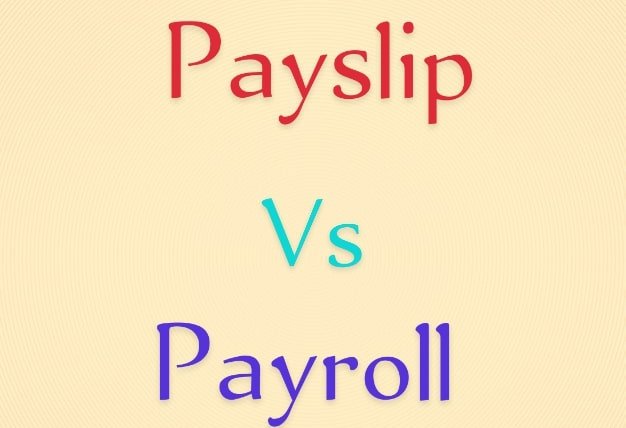Physical Address
304 North Cardinal St.
Dorchester Center, MA 02124
Physical Address
304 North Cardinal St.
Dorchester Center, MA 02124

What is the difference between payslip and payroll (payslip vs payroll)?
Payslip and payroll are words that are related to rewarding or compensating employees. These words are related to the process of paying an employee’s wages or salary.
The English dictionary defines the term “payslip” as a small document, included with an employee’s wages or salary, giving details of money earned, tax, and insurance paid.
On the other hand, payroll refers to a list of employees who receive salary or wages, together with the amounts due to each. It’s the total sum of money paid to employees.
It’s important to understand the difference between payslips and payroll, and we have discussed the main differences between them in this article.

A payslip is a noun and it refers to a small document, included with an employee’s wage or salary, with details of money earned, insurance paid, and tax.
The payslip is a document that shows a detailed breakdown of an employee’s total earnings. It also provides details of an employee’s deduction for a particular pay period.
Payslips contain important personal information of employees such as name, hours worked, pay rate, and total earnings before and after tax. Other important information that can be found in a payslip includes, deductions made from an employee’s pay like insurance, retirement contributions, and taxes.
Payslips are given to employees with their paychecks as proof of paying their wages or salary. It also helps the employees to better understand how their salaries or wages are calculated.
Also Read: Drama vs Melodrama: Difference and Comparison
A payslip includes the following important details;
The word “payroll” is a noun and it refers to a list of employees who receive salary or wages together with the amounts due to each.
Payroll describes the process of calculating and distributing paychecks to employees- it’s the total sum of money paid to employees. According to the English dictionary payroll is the series of accounting transactions that ensure all employees are paid and that all taxes and deductions are made properly.
Employees receive their wages or salaries based on their pay rate, and hours worked. Payroll involves keeping a good track of an employee’s pay rate, hours worked, etc.
Payroll also involves making accurate calculations and withholding taxes (federal and state income taxes, Medicare, and social security. Employers can complete the payroll process either in-house or outsourced to a third-party provider.
It’s a process that involves accurate calculation and must be done on time to ensure that employees receive their salary or wage.
Also Read: Paid vs Payable: Difference and Comparison
Payslip and payroll are words that are related to rewarding or compensating employees.
A payslip is a noun and it refers to a small document, included with an employee’s wage or salary, with details of money earned, insurance paid, and tax.
It’s an essential document given to employees to help them understand the detailed breakdown of their earnings, deductions, and benefits.
In contrast, payroll refers to a list of employees who receive salary or wages together with the amounts due to each. It’s the larger system or process used by companies to manage and distribute employee’s salaries and wages.
A payroll encompasses the total sum of all entire financial records for salaries, deductions, and bonuses. It’s the series of accounting transactions that ensure all employees are paid and that all taxes and deductions are made properly.
Generally, the payslip serves as evidence of payment of an employee’s income.
Payslips can also be used when applying for a loan or verifying employment. It’s an essential document that includes details such as basic salary, overtime, deductions (taxes or pension), and allowances.
Payroll also involves making accurate calculations and withholding taxes (federal and state income taxes, Medicare, and social security. Employers can complete the payroll process either in-house or outsourced to a third-party provider.
Also Read: Practical vs Practicable: Difference and Comparison
| Payslip | Payroll | |
| Meaning | A small document, included with an employee’s wage or salary, with details of money earned, insurance paid, and tax. | A list of employees who receive salary or wages together with the amounts due to each. |
| Purpose | Verifying personal income | Ensuring that all employees are paid correctly and on time |
| Composition | Basic pay, deductions, bonuses | Employee salaries, taxes, bonuses, etc. |
| Scope | Individual | Entire organization |
Let’s look at some examples of sentences with the terms “payslip” and “payroll”.
Also Read: Imply vs Infer: Difference and Comparison
Payslip and payroll are words that are related to rewarding or compensating employees.
The payslip is a document that shows a detailed breakdown of an employee’s total earnings. It also provides details of an employee’s deduction for a particular pay period.
Payroll describes the process of calculating and distributing paychecks to employees- it’s the total sum of money paid to employees.